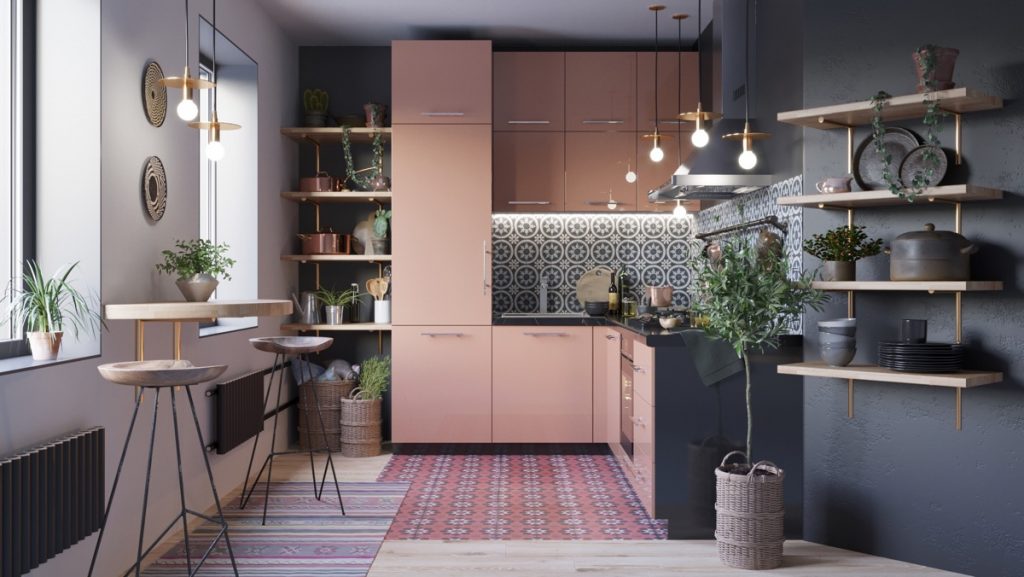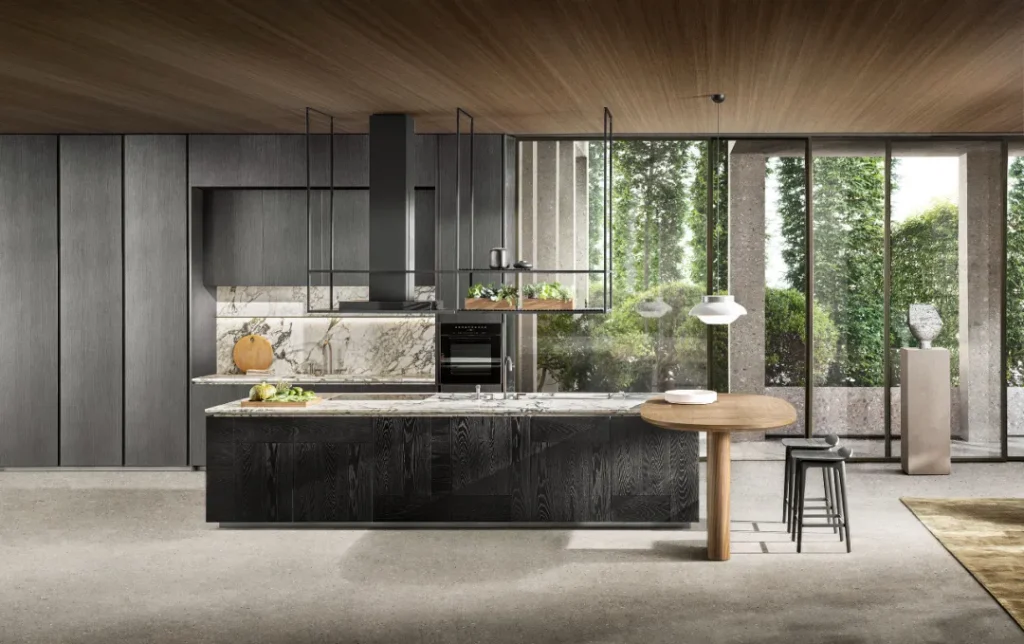Choosing the Perfect Kitchen Light: A Complete Guide
The kitchen is a central hub in many homes, serving as a space for cooking, dining, and socializing. Adequate lighting in this area is essential for safety, functionality, and aesthetic appeal. Proper illumination enhances visibility for tasks like chopping vegetables, reading recipes, and cooking, reducing the risk of accidents.
It also plays a crucial role in setting the mood, from bright and energizing for morning activities to warm and cozy for evening meals. Well-designed kitchen lighting can accentuate architectural features, cabinetry, and countertops, contributing to the overall design of the space. Safety is a primary concern in kitchen lighting.
Insufficient illumination can lead to accidents such as cuts and burns during food preparation. It is crucial to have ample light over work areas like the stove, sink, and countertops to ensure safe task performance. Additionally, good lighting can help deter pests and bacteria, which tend to thrive in dark, damp environments.
The importance of kitchen lighting extends beyond functionality and safety, significantly impacting the overall ambiance and design of the kitchen.
Types of Kitchen Lighting Fixtures
Ambient Lighting Options
Recessed lighting, also known as can lights or downlights, is a popular choice for kitchen lighting as it provides a clean and modern look. These fixtures are installed into the ceiling and provide ambient lighting for the entire space. Chandeliers are often used in larger kitchens or open-concept spaces to add a touch of elegance and drama to the room. Flush mount fixtures are a practical choice for providing general ambient lighting in the kitchen while taking up minimal space.
Task Lighting Solutions
Under cabinet lighting is essential for task lighting in the kitchen, as it illuminates countertops and workspaces where food preparation takes place. Pendant lights are another popular option for kitchen lighting, as they can add a decorative element to the space while providing focused task lighting over areas such as islands or dining tables.
Versatile Lighting Options
Track lighting is a versatile option that allows for adjustable and directional lighting, making it ideal for highlighting specific areas or features in the kitchen. This type of lighting can be used to create a layered and well-lit kitchen space.
Each type of lighting fixture has its own unique benefits and can be used in combination to create a well-designed and functional kitchen.
Factors to Consider When Choosing Kitchen Lighting
When choosing kitchen lighting fixtures, there are several factors to consider to ensure that the lighting meets the functional and aesthetic needs of the space. The first factor to consider is the layout and size of the kitchen. The layout will determine where lighting fixtures should be placed to provide adequate illumination for tasks such as cooking, cleaning, and food preparation.
The size of the kitchen will also dictate the number and type of fixtures needed to ensure that the space is well-lit. Another important factor to consider is the color temperature of the lighting. Warm white light (2700-3000K) is often preferred for kitchens as it creates a cozy and inviting atmosphere, while cool white light (3500-4100K) is better for task lighting as it provides better visibility and contrast.
It is important to strike a balance between these two color temperatures to create a well-lit and comfortable environment in the kitchen. Additionally, it is important to consider the style and design of the kitchen when choosing lighting fixtures. The fixtures should complement the overall design aesthetic of the space, whether it’s modern, traditional, or eclectic.
It is also important to consider energy efficiency when choosing kitchen lighting fixtures. LED lights are a popular choice for kitchen lighting as they are energy-efficient, long-lasting, and come in a variety of color temperatures and styles.
Tips for Maximizing Natural Light in the Kitchen
Maximizing natural light in the kitchen not only reduces energy consumption but also enhances the overall ambiance of the space. There are several ways to maximize natural light in the kitchen, starting with the layout and design of the space. When designing or renovating a kitchen, it is important to consider the placement of windows and doors to allow for maximum natural light penetration.
Skylights are also a great way to bring natural light into the kitchen, especially in areas where windows may not be feasible. Another way to maximize natural light in the kitchen is by using light-colored finishes and materials. Light-colored walls, cabinets, countertops, and backsplashes can help reflect natural light throughout the space, making it feel brighter and more open.
Additionally, using sheer or light-filtering window treatments can allow natural light to enter while still providing privacy and glare control. It is also important to keep windows clean and unobstructed to allow for maximum natural light penetration. Regularly cleaning windows and removing any obstructions such as overgrown vegetation or bulky window treatments can help ensure that natural light can freely enter the kitchen.
Lastly, strategically placing mirrors in the kitchen can help reflect natural light throughout the space, making it feel brighter and more spacious.
Choosing the Right Bulbs for Your Kitchen Lighting
Choosing the right bulbs for your kitchen lighting is essential to achieving the desired ambiance and functionality in the space. There are several types of bulbs available on the market, each with its own unique characteristics and benefits. The most common types of bulbs used in kitchen lighting include incandescent, halogen, fluorescent, and LED bulbs.
Incandescent bulbs are known for their warm and inviting light but are not very energy-efficient and have a shorter lifespan compared to other types of bulbs. Halogen bulbs produce a bright white light that is ideal for task lighting but also consume more energy than other options. Fluorescent bulbs are energy-efficient and long-lasting but are often associated with harsh and unflattering light.
LED bulbs have become increasingly popular for kitchen lighting due to their energy efficiency, long lifespan, and versatility. LED bulbs come in a variety of color temperatures ranging from warm white to cool white, making them suitable for both ambient and task lighting in the kitchen. They are also available in different shapes and sizes, allowing for creative and customized lighting designs in the kitchen.
When choosing bulbs for kitchen lighting, it is important to consider factors such as color temperature, brightness (measured in lumens), energy efficiency, and lifespan. It is also important to consider dimmability if you want to have control over the intensity of the light in your kitchen. By choosing the right bulbs for your kitchen lighting fixtures, you can create a well-lit and inviting space that meets your functional and aesthetic needs.
How to Create a Layered Lighting Design in Your Kitchen
Key Components of a Layered Lighting Design
The key components of a layered lighting design include ambient lighting, task lighting, accent lighting, and decorative lighting.
Types of Lighting Fixtures
Ambient lighting provides overall illumination for the entire space and is usually achieved through overhead fixtures such as recessed lights or flush mount fixtures. Task lighting is essential for specific work areas such as countertops, islands, and sinks where focused illumination is needed for activities like food preparation and cooking. This can be achieved through under cabinet lighting or pendant lights placed strategically over these areas. Accent lighting is used to highlight specific features or areas in the kitchen such as artwork, architectural details, or decorative elements. This can be achieved through track lighting or adjustable recessed lights that can be directed towards these features. Decorative lighting adds visual interest and personality to the space through fixtures such as chandeliers or pendant lights that serve as focal points in the kitchen.
Benefits of a Layered Lighting Design
By combining these different types of lighting fixtures, you can create a layered lighting design that enhances both the functionality and aesthetics of your kitchen. This approach allows you to customize the lighting according to your needs while adding depth and visual interest to the space.
Installation and Maintenance of Kitchen Lighting Fixtures
Once you have chosen the right kitchen lighting fixtures for your space, proper installation and maintenance are essential to ensure that they function effectively and safely. It is important to hire a qualified electrician to install your kitchen lighting fixtures to ensure that they are installed correctly and comply with electrical codes and safety standards. Proper maintenance of kitchen lighting fixtures involves regular cleaning and inspection to ensure that they are functioning properly.
Dust and debris can accumulate on light fixtures over time, affecting their performance and appearance. It is important to clean fixtures regularly using a soft cloth or duster to remove any buildup of dirt or grime. It is also important to inspect wiring, sockets, and bulbs regularly to ensure that they are in good condition.
Loose connections or damaged wiring can pose safety hazards and affect the performance of your lighting fixtures. If you notice any issues with your kitchen lighting fixtures such as flickering lights or burnt out bulbs, it is important to address them promptly to prevent further damage or safety risks. In conclusion, proper installation and maintenance of kitchen lighting fixtures are essential for ensuring that they function effectively and safely.
By following these guidelines, you can enjoy well-lit and visually appealing kitchen spaces that enhance both functionality and aesthetics in your home.



